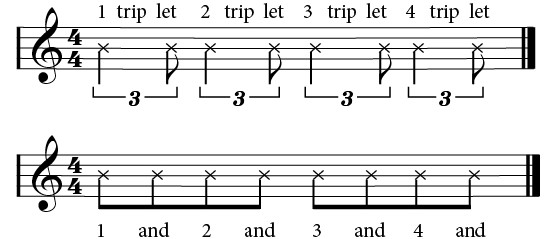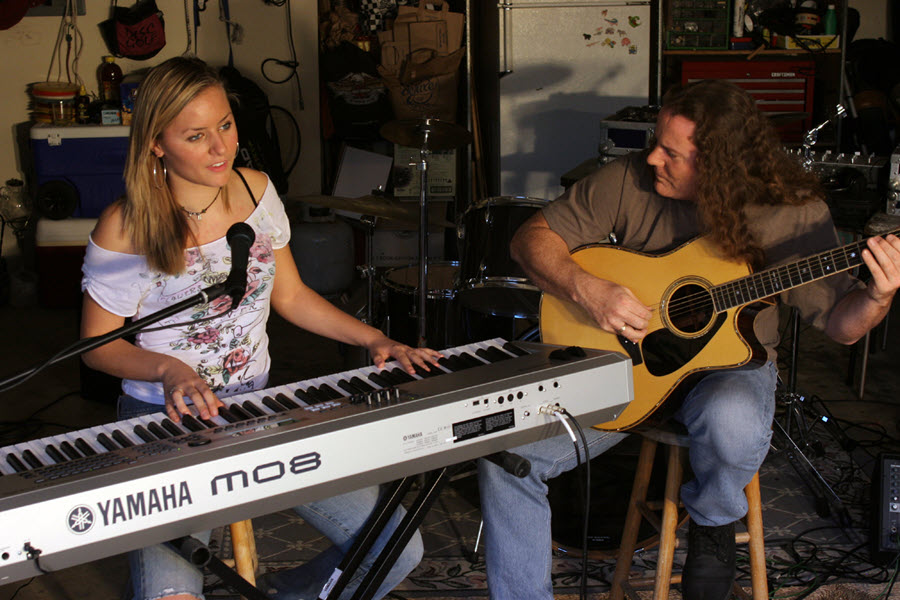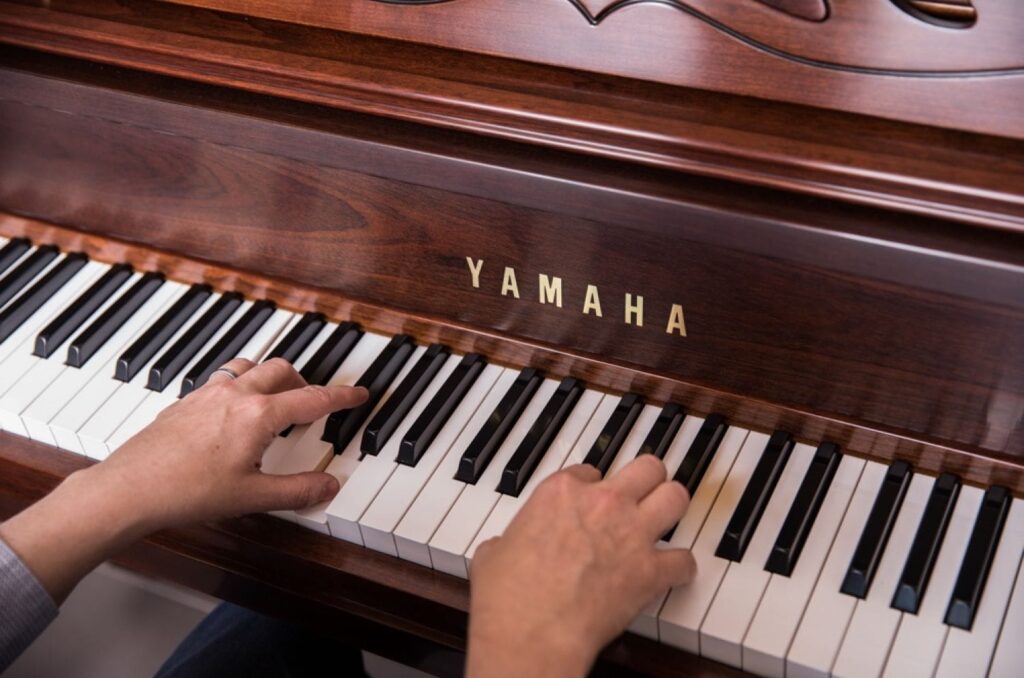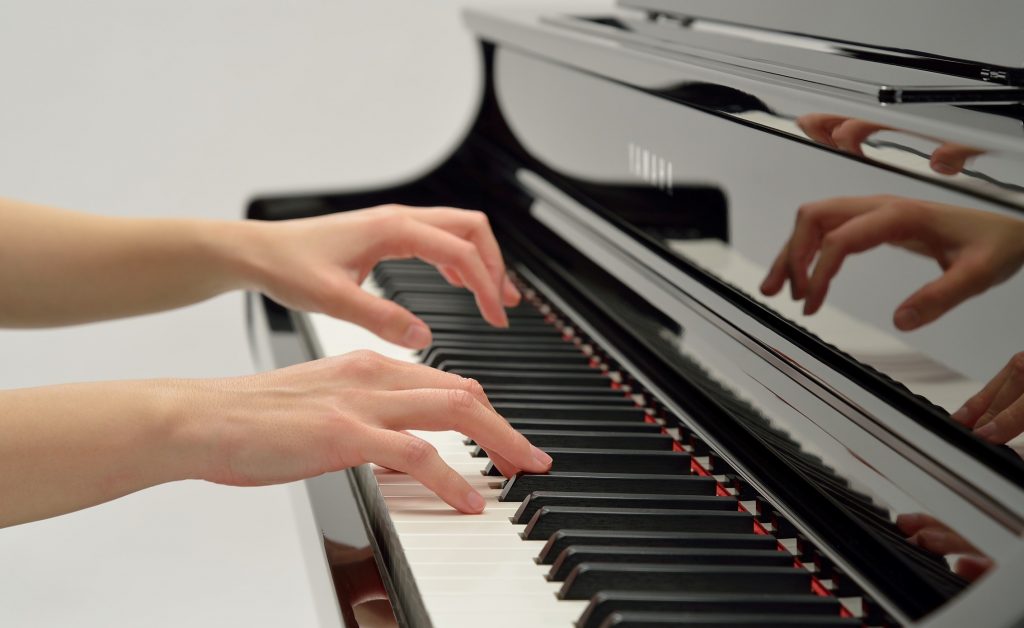Tagged Under:
The Difference Between Swing Time and Straight Time
It all comes down to the eighth notes.
Have you ever noticed that different styles of music have different feels to them? Rock ’n’ roll feels nothing like reggae, and jazz feels very different from classical and pop music. The most critical difference is how the main beat is subdivided: rock and pop divide the beat equally, so you have eighth notes that cut the beat into equal halves, and sixteenth notes that divide the beat in four equal parts. This is commonly called straight time, or a “duple” feel. Jazz and reggae commonly cut the beat into three equal parts, called swing time, or a “triplet” feel. In this blog, we’ll explore the difference between the two.
Straight and Swing Eighths
Straight eighth notes are easy. You simply take the main beats in the measure — that is, the quarter notes — and divide them in half. These eighth notes are commonly verbalized by saying the word “and” between each of the numeric counts in the measure, as shown below:

Swing notes, however, are based on a triplet feel, which divides the main beat into three equal parts. These are commonly verbalized by saying the syllables “trip” and “let” between each of the numeric counts in the measure, as shown below:

If you compare both of these subdivisions, you can see that only the main beats line up, with the “in-between” notes falling in different places:

To play with a swing feel, you tie the first two triplets together into a single note, followed by the last triplet for the second note of the grouping, as shown below:

Doing this makes the first note longer and causes the second note to occur a bit later than would an even subdivision of the beat into eighth notes, as shown in the bottom stave in the illustration below:

Playing in Swing Time
Let’s apply this concept to some actual notes on the keyboard. Here’s the C Major scale played in straight time, followed by it played in swing time:

Getting comfortable with the feel of swing time is important — so important, in fact, that it’s a good idea to add this rhythm to your normal scale practice routine, alternating between these two rhythmic approaches.
Too add to a good swing feel, you should also slightly accent the off-beat notes — the ones that line up with the “let” syllable (that is, the second, shorter note of the group). If it’s easier for you, just make sure to not to accent the downbeat notes (the first/longer note of the grouping). Here’s the way it should look and sound:

Instructing the Player to Add a Swing Feel
If you’re looking at that last example, you may be thinking that, with all those triplet markings, fingerings and accents, the notation is very complicated to read … and you’d be right. In fact, no one ever writes out swing eighth notes like that. It’s much simpler to leave them looking like normal straight eighth notes, with an instruction to the player to change the feel of the rhythm.
This is done with either of two methods. The simplest is to just write “Play with a swing feel” at the top of the music. But the most common (and accurate) way to deliver this message is to add this marking to the top of the first measure of the music:

This tells the player that a swing feel should be imparted to the music that follows. Our previous scale exercise would now look like this:

Let’s try another example, this time using a typical bebop jazz melodic figure instead of a simple scale.
No one would want to have to read a melody notated like this:

It’s much easier to read (and play) this version:

Refining Swing Feel
Now that you understand the theory, here’s the reality: Few jazz musicians actually play swing eighth notes as true triplets. In fact, if players only went as far as described above, they’d likely be accused of having a swing feel that’s “corny.” To improve your swing feel, you need to refine your placement of the second note of the triplet grouping. At very slow tempos, a true triplet works fine, and sounds like you are really digging into the groove of the tune. But as the tempo increases, the second note of the grouping will start to feel like it’s lagging a bit too much, making the rhythm somewhat jerky. So players will move it a little earlier, while still retaining the loping feel of the triplets. The faster the tempo, the more even the notes will get.
Listen to this audio clip of the previous bebop line, played at a faster tempo and in a variety of swing feels:
Each time through the melody I change my placement of the second note of the grouping. First, I play it as straight eighth notes; then as true triplets; then with the second note moved slightly earlier; and then with the second note moved a bit further back. I finish with straight eight notes once again so you can hear that even the subtlest swing treatment still sounds different than straight time.
This more refined way of playing swing time is best learned by listening to jazz recordings and trying to play along. As the great Duke Ellington (along with lyricist Irving Mills) said, “It don’t mean a thing if it ain’t got that swing.”
All piano examples played on a Yamaha P-515
Check out our other Well-Rounded Keyboardist postings.
Click here for more information about Yamaha keyboard instruments.














